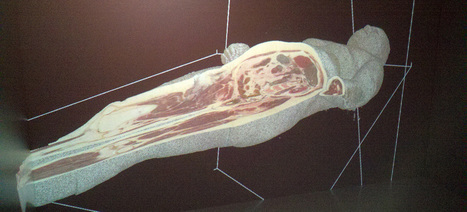Computer-generated models are starting to let researchers and students peer into the body without needing a real human stretched out before them. Virtual dissection tables have been built at places like Stanford and the University of Calgary. Now, University of Michigan computer scientists and biologists have taken the technology another step forward, using projectors, joysticks and 3-D equipment to build a floating holographic human that users can dissect, manipulate, and put back together as they wish.
Research and publish the best content.
Get Started for FREE
Sign up with Facebook Sign up with X
I don't have a Facebook or a X account
Already have an account: Login
Everything from new developments and discoveries in the Technology world: science, ICT, medicine, pharma...
Curated by
Gust MEES
 Your new post is loading... Your new post is loading...
 Your new post is loading... Your new post is loading...
|











Amazing!!!